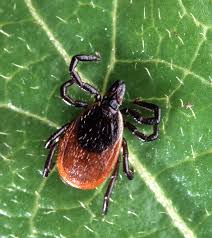Lyme Disease : New Study

Scientists have discovered that the enzyme BbLDH is crucial for the survival and infectivity of the Lyme disease bacterium Borrelia burgdorferi.
- Lyme Disease is caused by the bacteria Borrelia burgdorferi.
- The infection can lead to problems with the skin, heart, brain, and joints.
- It’s transmitted (spread) to humans through a tick bite.
- Not all tick bites cause Lyme disease. Only deer ticks (also called black-legged ticks) can spread the bacteria that cause Lyme disease.
- It cannot spread between humans, from pets to humans, through air, food, water, or lice, mosquitoes, fleas, and flies also do not transmit it.
- It is prevalent in wooded and grassy areas worldwide, particularly during warmer months. It is most commonly reported in North America, Europe, and some parts of Asia.
- Typical symptoms include fever, headache, fatigue, and a characteristic skin rash called erythema migrans.
- If left untreated, infection can spread to joints, the heart, and the nervous system.
- Treatment with antibiotics usually cures Lyme disease, especially when started early.




